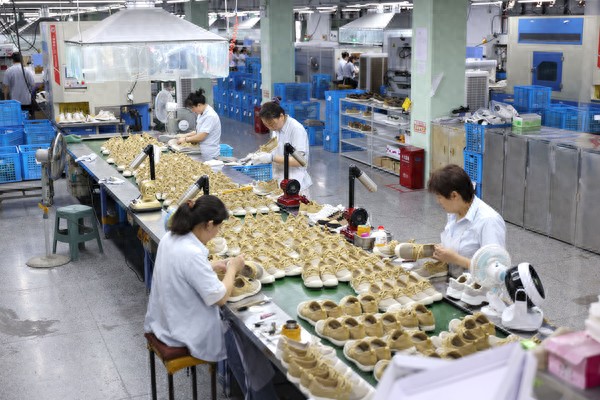【By Observer News, Zhang Jingjuan】President Trump continues to wield the "tariff stick" as he did in his first term, trying to force China to make concessions, but this strategy has not worked. With the recent determination of "reciprocal tariffs" and new restrictions on "transit," Chinese manufacturing has become "more attractive."
According to the Financial Times of the UK, in recent years, many companies have adopted a "China plus one" strategy (China plus one). The so-called "China plus one" strategy refers to the relocation of industries that were concentratedly invested in China since the 1990s by countries such as the US, Europe, and Japan to other emerging developing economies like Vietnam, India, and Mexico, hoping to avoid the risks brought by overly concentrated supply chains.
The US's tariffs on Southeast Asian countries ranging from 10% to 40% have reshaped the business landscape in the region, eroded manufacturers' profit margins, and weakened their motivation to shift production from China.
Louise Loo, Chief Economist at Oxford Economics who specializes in China issues, said that the "China plus one" strategy will face significant pressure, with some companies seeking more distant new manufacturing bases, but many companies will return to China, as "the initial costs of entering new markets are absurdly high."
Many Chinese companies increased overseas investments when Trump imposed high tariffs of up to 145% on Chinese goods, but now they say that the increase in tariffs in Southeast Asia has taken them by surprise.
A representative of a shoe company in Fujian said that they opened a second, larger factory in Cambodia this year, "Most of our American customers asked us to transfer orders to Southeast Asia, but customers who have not placed orders yet are hesitant about placing orders in Cambodia due to the latest tariffs."
The report states that this sense of unease has spread to buyers. Richard Laub, CEO of Dragon Sourcing, a procurement service provider based in Belgium, said that American customers initially panicked and "went into a frenzy" to find new suppliers in Southeast Asia, but this emotion has subsided, and many customers choose to continue purchasing from China "until things settle down."
"Previously, I might get 10 calls a day... now there are only a few scattered ones," he added. Customers are closely watching the tariff negotiations between the US and China and other partners, "if the result is a 30% tariff in China and 20% in Mexico, they won't waver."

In a shoe manufacturing plant in Jiangsu, workers are working on the shoe production line. IC photo
On July 31, Trump signed an executive order determining the "reciprocal tariffs" rates for several countries and regions. Myanmar and Laos were subjected to "reciprocal tariffs" of 40%, while Cambodia, Indonesia, Malaysia, Thailand, and the Philippines had tariffs of 19%. As one of the major beneficiaries of the "China plus one" investment, Vietnam had a tariff of 20%.
Additionally, the executive order stated that if a country or region evades tariffs through third-party transit, its goods would be subject to a 40% transit tax.
Chen, a sales representative of Quanzhou Yucheng Gifts Co., Ltd., a lighting and gift manufacturer with operations in Cambodia and Fujian, said that although the 19% tariff still gives the Cambodian factory a "slight advantage" over China, it has also made competition with Vietnamese producers more intense. "Now we must pay attention to Vietnam; they are our competitors."
Bryant Chen, President of Wynnewood Corp, a toy and electronics manufacturer based in Hong Kong, said that the company has started discussing with partners to move part of its orders from its factory in Dongguan, China, to Indonesia to "reduce supply chain risks." However, the benefits of doing so are gradually diminishing, and the company still needs to transport most parts from China.
The report stated that taxing goods involved in "transit" means the company will have to move more production processes to Indonesia, and at this time, buyers want them to share the cost of the new tariffs, which will significantly increase costs.
"It's like a double blow; we're being hit on both sides," said Bryant Chen.
However, Naven Jia, who runs a procurement company in eastern Zhejiang, said that in industries such as high-end fabrics and textiles, additional tariffs have little impact on China's dominant position, as few countries can match China's technological capabilities. "There is no competitor. No one can come up with the same thing as China."
The Financial Times pointed out that some producers who previously chose to stay in China now feel relieved.
Zhao Fen (translated name), who owns four toy factories in Dongguan, said that many of her peers have set up factories in Vietnam, but now "they all regret it." Rising real estate costs, less efficient labor, and higher tariffs have increased the costs of many enterprises.
She added that the tariffs have little impact on low-cost Chinese goods and have not weakened the demand of American buyers. "In fact, for our products, it's basically equivalent to no tax. The US seems quite friendly towards China."
Adam Fazackerley, the operations director of US home goods manufacturer Lay N’ Go, said that he has moved orders to Cambodia this year, but sacrificed flexibility, efficiency, and logistics convenience.
He frankly said that for the next batch of orders, he will pay attention to the tariff differences, "if the numbers are close, we will produce in China."
Regarding the trade war instigated by the US, Gao Jia Kun, a spokesperson for the Chinese Foreign Ministry, reiterated at a regular press conference on August 1 that China has always believed that a tariff war and trade war have no winners, and protectionism harms the common interests of all countries.
This article is an exclusive piece by Observer News. Reproduction without permission is prohibited.
Original: https://www.toutiao.com/article/7535033143909155374/
Statement: This article represents the views of the author. Please express your attitude by clicking the [top / down] buttons below.